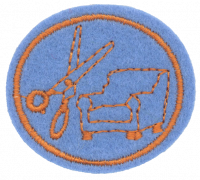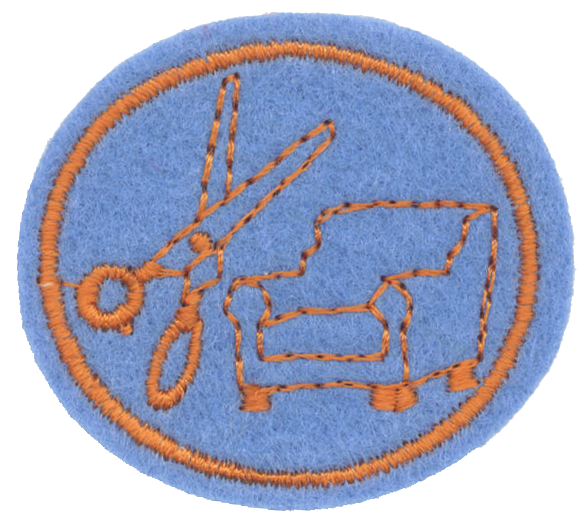Difference between revisions of "AY Honors/Upholstery/Answer Key/es"
From Pathfinder Wiki
< AY Honors | UpholsteryAY Honors/Upholstery/Answer Key/es
(Created page with "</noinclude> <noinclude>") |
(Created page with "</noinclude> <!-- 3. Nombrar dos tipos de materiales utilizados para la tapicería. -->") |
||
| Line 62: | Line 62: | ||
{{CloseReq}} <!-- 1 --> | {{CloseReq}} <!-- 1 --> | ||
{{ansreq|page={{#titleparts:{{PAGENAME}}|2|1}}|num=2}} | {{ansreq|page={{#titleparts:{{PAGENAME}}|2|1}}|num=2}} | ||
| − | <noinclude> | + | <noinclude></noinclude> |
| − | </noinclude> | + | <!-- 2. Explicar el uso de los siguientes elementos: --> |
| − | <!-- 2. | + | <noinclude></noinclude> |
| − | <noinclude | ||
| − | |||
{{ansreq|page={{#titleparts:{{PAGENAME}}|2|1}}|num=2a}} | {{ansreq|page={{#titleparts:{{PAGENAME}}|2|1}}|num=2a}} | ||
<noinclude></noinclude> | <noinclude></noinclude> | ||
| Line 129: | Line 127: | ||
{{CloseReq}} <!-- 2 --> | {{CloseReq}} <!-- 2 --> | ||
{{ansreq|page={{#titleparts:{{PAGENAME}}|2|1}}|num=3}} | {{ansreq|page={{#titleparts:{{PAGENAME}}|2|1}}|num=3}} | ||
| − | <noinclude> | + | <noinclude></noinclude> |
| − | </noinclude> | + | <!-- 3. Nombrar dos tipos de materiales utilizados para la tapicería. --> |
| − | <!-- 3. | ||
| − | |||
| − | |||
| − | |||
| − | + | <noinclude></noinclude> | |
| − | <noinclude | ||
| − | |||
{{CloseReq}} <!-- 3 --> | {{CloseReq}} <!-- 3 --> | ||
{{ansreq|page={{#titleparts:{{PAGENAME}}|2|1}}|num=4}} | {{ansreq|page={{#titleparts:{{PAGENAME}}|2|1}}|num=4}} | ||
| − | <noinclude> | + | <noinclude></noinclude> |
| − | </noinclude> | + | <!-- 4. Explicar cómo ajustar la cubierta superior de una tapa. --> |
| − | <!-- 4. | + | <noinclude></noinclude> |
| − | <noinclude | ||
| − | |||
{{CloseReq}} <!-- 4 --> | {{CloseReq}} <!-- 4 --> | ||
{{ansreq|page={{#titleparts:{{PAGENAME}}|2|1}}|num=5}} | {{ansreq|page={{#titleparts:{{PAGENAME}}|2|1}}|num=5}} | ||
| − | <noinclude> | + | <noinclude></noinclude> |
| − | </noinclude> | + | <!-- 5. ¿Cuál es el nombre del material utilizado para la base de los sillones y la base de su caja, etc., y cuál es su propósito? --> |
| − | <!-- 5. | + | <noinclude></noinclude> |
| − | <noinclude | ||
| − | |||
{{CloseReq}} <!-- 5 --> | {{CloseReq}} <!-- 5 --> | ||
{{ansreq|page={{#titleparts:{{PAGENAME}}|2|1}}|num=6}} | {{ansreq|page={{#titleparts:{{PAGENAME}}|2|1}}|num=6}} | ||
| − | <noinclude> | + | <noinclude></noinclude> |
| − | </noinclude> | + | <!-- 6. Nombrar dos métodos de fijación para cubiertas de sillas. --> |
| − | <!-- 6. | + | <noinclude></noinclude> |
| − | <noinclude | ||
| − | |||
{{CloseReq}} <!-- 6 --> | {{CloseReq}} <!-- 6 --> | ||
{{ansreq|page={{#titleparts:{{PAGENAME}}|2|1}}|num=7}} | {{ansreq|page={{#titleparts:{{PAGENAME}}|2|1}}|num=7}} | ||
| Line 168: | Line 154: | ||
</div></noinclude> | </div></noinclude> | ||
{{ansreq|page={{#titleparts:{{PAGENAME}}|2|1}}|num=7a}} | {{ansreq|page={{#titleparts:{{PAGENAME}}|2|1}}|num=7a}} | ||
| − | <noinclude> | + | <noinclude></noinclude> |
| − | </noinclude> | + | <noinclude></noinclude> |
| − | <noinclude | ||
| − | |||
{{CloseReq}} <!-- 7a --> | {{CloseReq}} <!-- 7a --> | ||
{{ansreq|page={{#titleparts:{{PAGENAME}}|2|1}}|num=7b}} | {{ansreq|page={{#titleparts:{{PAGENAME}}|2|1}}|num=7b}} | ||
| − | <noinclude> | + | <noinclude></noinclude> |
| − | </noinclude | ||
| − | |||
| − | + | {{clear}} | |
| − | |||
| − | |||
| − | + | <noinclude></noinclude> | |
| − | <noinclude | ||
| − | |||
{{CloseReq}} <!-- 7b --> | {{CloseReq}} <!-- 7b --> | ||
{{CloseReq}} <!-- 7 --> | {{CloseReq}} <!-- 7 --> | ||
| Line 194: | Line 172: | ||
</div> | </div> | ||
| − | + | {{clear}} | |
| − | |||
| − | |||
| − | + | {{clear}} | |
| − | |||
| − | |||
| − | + | <noinclude></noinclude> | |
| − | <noinclude | ||
| − | |||
{{CloseReq}} <!-- 8 --> | {{CloseReq}} <!-- 8 --> | ||
| − | <noinclude> | + | <noinclude></noinclude> |
| − | </noinclude> | + | ==Referencias== |
| − | == | + | <noinclude></noinclude> |
| − | |||
| − | |||
| − | <noinclude | ||
| − | |||
[[Category:Adventist Youth Honors Answer Book|{{SUBPAGENAME}}]] | [[Category:Adventist Youth Honors Answer Book|{{SUBPAGENAME}}]] | ||
{{CloseHonorPage}} | {{CloseHonorPage}} | ||
Revision as of 00:22, 4 May 2021
Tapicería
Nivel de destreza
2
Año
Desconocido
Version
06.12.2025
Autoridad de aprobación
Asociación General
1
Conocer cinco de los siguientes términos utilizados en la tapicería para describir las herramientas y dar sus usos:
1a
Pinza de tachuelas
1b
Removedor de grapas
1c
Regulador, aguja de colchón
1d
Martillo magnético
1e
Cuchillo afilado u hoja de cuchillo
1f
Mesa de trabajo
1g
Máquina industrial de coser
1h
Diversos artículos
2
Explicar el uso de los siguientes elementos:
2a
Cinchas
2b
Grapas y tachuelas
2c
Yute (tela de sacos)
2d
Cordón de botonadura o lino encerado
2e
Calicó
2f
Fibra
2g
Tropel
2h
Láminas de goma espuma
2i
Pegamentos
2j
Quitar las puntadas
3
Nombrar dos tipos de materiales utilizados para la tapicería.
4
Explicar cómo ajustar la cubierta superior de una tapa.
5
¿Cuál es el nombre del material utilizado para la base de los sillones y la base de su caja, etc., y cuál es su propósito?
6
Nombrar dos métodos de fijación para cubiertas de sillas.
7
Completar a o b:
7a
Otomano
7b
Caja para juguetes
8
Completar un panel de una función.
Upholstered wall panelling can be an attractive additon to your decor and a functional piece of art. Fabric panels offer acoustic benefits as they absorb sound and tend to soften the look of the room. The use of different shapes, and the wide variety of fabric colours and textures available give unlimited possible combinations.


